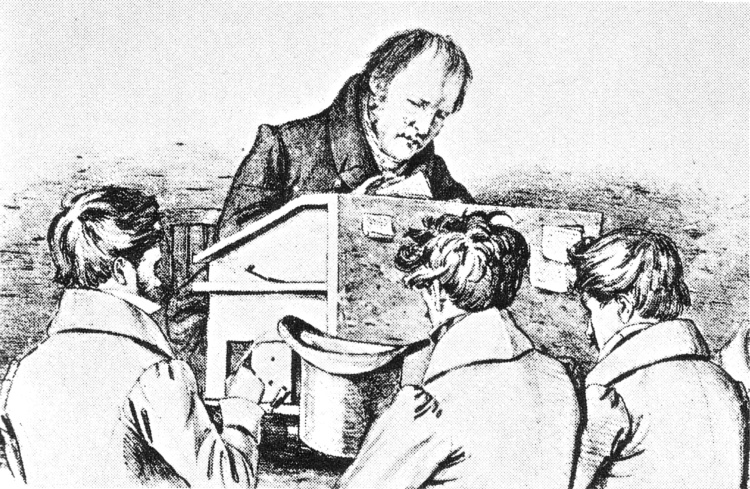
8-cell human embryo, day 3. ‘The vision has been of God in travail of a beautiful offspring, God engendering a universe within himself in a painless labour…’ The Enneads, V.8.12
The One generates the second hypostasis Intellectual-Principle (Divine Mind) which in turn gives birth to the world of reflexive consciousness with its activity of self-knowing, and to Soul.
Knowledge by Intellectual-Principle – a unity-in-multiplicity – requires an object. ‘Either we must exhibit the self-knowing of an uncompounded being – and show how that is possible – or abandon the belief that any being can possess veritable self-cognition. To abandon the belief is not possible in view of the many absurdities thus entailed’ (The Enneads, V.3.1)
On the division necessary for the creation of philosophical (conceptual, spiritual) objects Plotinus asks ‘How is the self to make the partition? The thing cannot happen of itself. …The intellectual object is itself an activity, (my italics) not a mere potentiality; it is not lifeless…’ (V.3.5)
For Divine Mind, knowing its objects in their ‘life’, in their movement, equates to knowing itself. Plotinus asks ‘Now, can (Intellectual-Principle) know those objects alone or must it not simultaneously (my italics) know itself, the being whose function it is to know just those things? Can it have self-knowledge in the sense (dismissed above as inadequate) of knowing its content while it ignores itself? Can it be aware of knowing its members and yet remain in ignorance of its own knowing self? Self and content must be simultaneously present…’ (V.3.1)
Plotinus continues ‘Unless there is something beyond bare unity, there can be no vision: vision must converge with a visible object. …If there be no distinctions, what is there to do, what direction in which to move? An agent must either act upon the extern or be a multiple and so able to act upon itself: making no advance towards anything other than itself, it is motionless, and where it could know only blank fixity it can know nothing. …the intellectual act will always comport diversity as well as the necessary identity…If (the Intellectual-Principle) had to direct itself to a memberless unity, it would be dreasoned: what could it say or know of such an object? …In sum, then, a knowing principle must handle distinct items: its object must, at the moment of cognition, contain diversity; otherwise the thing remains unknown…Similarly the knowing principle itself cannot remain simplex, especially in the act of self-knowing…’ (V.3.10)
The ‘knowing principle’ is the activity of self-knowing – Intellectual-Principle and intellectual activity are the same. That activity is driven by contradiction1 and is known perspectivally.2
Divine Mind gives birth to objects as the embodiment of its outgoing creative power and in its contemplative recollection of and desire to unite with the One. This very activity means that it is incomplete. But the conceptual and spiritual development of its multiplicity (deepening self-knowledge rising from the particular to the general) brings it back to the One, enabling union with (vision/knowledge of) it.
‘Thus the Intellectual-Principle, in the act of knowing the Transcendent, is a manifold. It knows the Transcendent in very essence but, with all its effort to grasp that prior as a pure unity, it goes forth amassing successive impressions, so that, to it, the object becomes multiple: thus in its outgoing to its object it is not (fully realised) Intellectual-Principle; it is an eye that has not yet seen; in its return it is an eye possessed of the multiplicity which it has itself conferred: it sought something of which it found the vague presentment within itself; it returned with something else, the manifold quality with which it has of its own act invested the simplex.
If it had not possessed a previous impression of the Transcendent it could never have grasped it, but this impression, originally of unity, becomes an impression of multiplicity; and the Intellectual-Principle in taking cognisance of that multiplicity knows the Transcendent and so is realised as an eye possessed of its vision.’ (V.3.11)
Here, prior to the fertilisation of Christianity by Neoplatonism and the conflation of the hypostases by the Christian mystic Böhme and the consummate Neoplatonist Hegel is their source for God’s requiring diremption from himself in the world through his other, Christ, to enable the process and completion of his self-knowing and its resolution in a unified perspectival cultus of the Spirit.
Notes
1. ‘In that Intellectual Cosmos, where all is one total, every entity that can be singled out is an intellective essence and a participant in life: it is identity and difference, movement and rest, the object moving and the object at rest, essence and quality.’ (V.9.10)↩
2. ‘…since the object of vision has variety (distinction within its essential oneness) the intuition must be multiple and the intuitions various, just as in a face we see at the one glance eyes and nose and all the rest. But is not this impossible when the object to be thus divided and treated as a thing of grades is a pure unity? No: there has already been discrimination within the Intellectual-Principle; the Act of the Soul is little more than a reading of this.’ (IV.4.1)↩

Plotinus, The Enneads (Abridged), Trans., Stephen MacKenna, Penguin, London, 1991
Image








